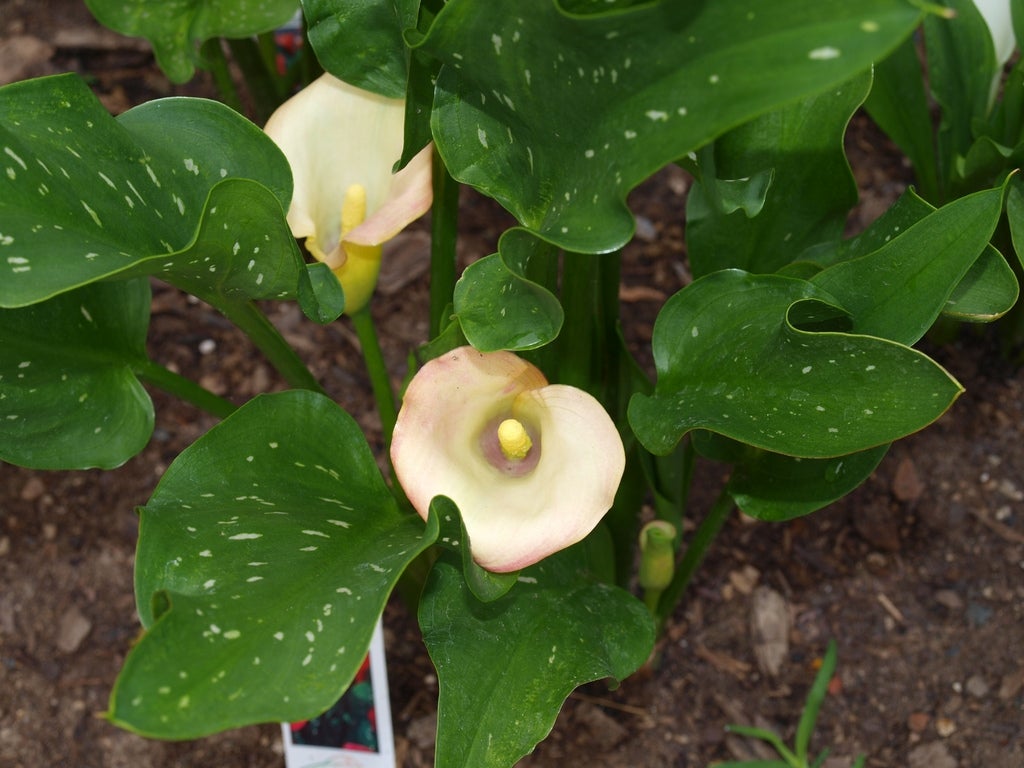Transplanting Calla Lilies: How To Transplant Calla Lilies Outside


With their handsome, tropical foliage and dramatic flowers, calla lilies add a hint of mystery and elegance to the garden. This article tells you how to transplant calla lilies outside or into pots for indoor or outdoor culture.
Transplanting Calla Lilies
The best time to transplant calla lilies (Zantedeschia aethiopica) is in the spring after all danger of frost has passed and the soil is beginning to warm. Choose a location with organically rich soil that holds moisture well. Callas grow well in low, moist areas where most other rhizomes would suffer from root rot. The plants tolerate full sun in areas with mild summer, but where summers are hot they need morning sun and afternoon shade.
How to Transplant Calla Lilies Outside
Before transplanting calla lilies, prepare the soil by loosening it with a shovel. Work in some compost to enrich the soil and help it hold moisture. Plant the rhizomes 3 to 4 inches (7.5-10 cm.) deep and transplant potted calla lilies into a hole dug to fit the depth of the pot. Space the plants 12 to 18 inches (30.5-46 cm.) apart. Callas need lots of moisture, so water deeply after planting, and spread at least 2 inches (5.0 cm.) of mulch around the plants to prevent moisture from evaporating. When moving calla lily plants, prepare the new bed and dig holes for the plants before lifting them from the old location so you can get them in the ground as quickly as possible. Slide a spade under the plants at a depth of 4 to 5 inches (10-13 cm.) to avoid damaging the rhizomes. Place them in the holes so that the soil line is even with the surrounding soil. Calla lilies are ideal for landscaping garden ponds, where they thrive in water up to 12 inches (30.5 cm.) deep. Place the plant or rhizome in a basket and plant it so that the rhizome is about 4 inches (10 cm.) deep. Calla lilies are hardy in USDA plant hardiness zones 8 through 10. In cooler zones, the rhizomes must be treated as annuals or dug up in the fall and stored over the winter in a frost-free area. When planted in water, the rhizomes can remain outdoors as long as the water doesn't freeze at the planting depth. You can also transplant your callas into pots and grow them as houseplants. Choose a roomy pot that is at least 6 to 8 inches (15-20 cm.) deep and leave 1/2 to 1 inch (1-2.5 cm.) of space between the top of the soil and the top of the pot to make it easy to water the plant generously. Use a potting soil rich in peat or organic matter that holds moisture. Transplanting potted calla lilies back to the garden in spring is a snap.
Sign up for the Gardening Know How newsletter today and receive a free copy of our e-book "How to Grow Delicious Tomatoes".

Jackie Carroll has written over 500 articles for Gardening Know How on a wide range of topics.